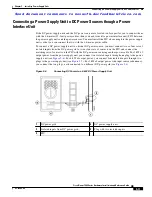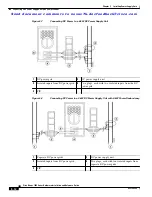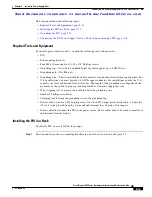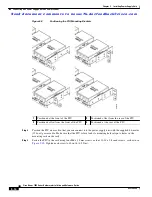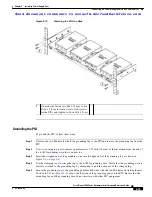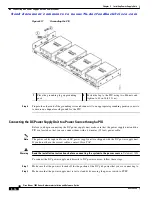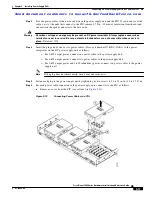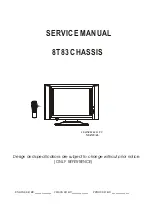
S e n d d o c u m e n t c o m m e n t s t o n e x u s 7 k - d o c f e e d b a c k @ c i s c o . c o m
6-5
Cisco Nexus 7000 Series Hardware Installation and Reference Guide
OL-23069-06
Chapter 6 Connecting the Cisco Nexus 7000 Series Switch to the Network
Connecting the Supervisor CMP Port
Caution
To prevent an IP address conflict, do not connect the MGMT 10/100/1000 Ethernet port until the initial
configuration is complete. For more information, see the
“Creating an Initial Switch Configuration”
To connect the supervisor modules to the network, follow these steps for each supervisor module:
Step 1
Connect a modular, RJ-45, UTP cable to the MGMT ETH port on the supervisor module.
Step 2
Route the cable through the central slot in the cable management system.
Step 3
Connect the other end of the cable to a 10/100/1000 Ethernet port on the network device.
Connecting the Supervisor CMP Port
The CMP, which is included on the Cisco Nexus 7000 Series supervisor module, is a secondary,
lightweight processor that provides a second network interface to the system for use even when the
Control Processor (CP) is not reachable. You can access the CMP to perform operations, such as taking
over the CP console, restarting the CP, or restarting a particular I/O module.
Caution
To prevent an IP address conflict, do not connect the CMP MGMT 10/100/1000 Ethernet port to the
network until the initial configuration is complete. For more information, see the
.
To connect the CMP to the network, follow these steps for each installed supervisor module:
Step 1
Connect a modular, RJ-45, UTP cable to the CMP MGMT ETH port on the supervisor module.
Step 2
Route the cable through the cable management system and to the networking device.
To configure the port, see the
Cisco Nexus 7000 Series Connectivity Management Processor
Configuration Guide
.
Connecting an I/O Module
After you set up an IP address for the switch and create an out-of-band management connection for the
switch, you can connect the copper (1000BASE-T) and fiber-optic (SFP, SFP+, FET, and X2) I/O
modules to the network.
lists the connectors and cables that you can use with each type of I/O
module.

